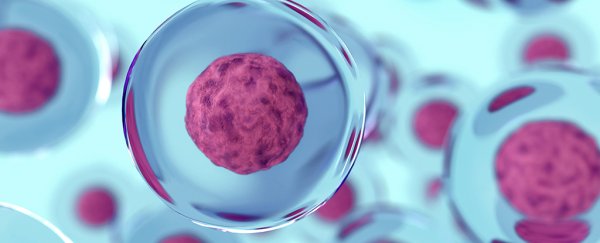Artificial cells created inside the lab have taken another major step forward, with scientists developing cells that are able to produce their own chemical energy and synthesise parts of their own construction.
That makes these artificial cells a lot more like real, biological cells – cells that can construct and organise their own building blocks naturally.
Not only could this help us understand how real cells work and come into being in the first place, it could also be vital for a host of other areas of research – such as ongoing efforts to produce artificial organs and other body tissue to fight back against disease.
"I have been trying for a long time to construct a living artificial cell, especially focusing on membranes," says lead researcher Yutetsu Kuruma from the Tokyo Institute of Technology in Japan.
"In this work, our artificial cells were wrapped in lipid membranes, and small membrane structures were encapsulated inside them. In this way, the cell membrane is the most important aspect of forming a cell."
The lipid membranes contained the proteins ATP synthase and bacteriorhodopsin, purified from living cells. These were designed to work in tandem, to use light energy to create an energy difference inside the cell, and then to use that energy difference to construct more molecules and more protein.
During the experiments, the photosynthesis process happened as the scientists had hoped. The artificial cells mimicked real cells by making messenger RNA (mRNA) from DNA, and then making protein from mRNA.
The key feature here is the cells' ability to produce that energy and do their own synthesising, potentially leading to the creation of independent artificial cells that can be sustained on their own.
While the study wasn't able to duplicate the full range of proteins that an actual cell can, the researchers think this might be within reach with an upgraded setup.
The scientists say their work could also be important in the study of protocells, which are thought to have come before modern cells. How did these protocells produce energy to create their own metabolism? This new type of artificial cell might tell us.
If two membrane proteins can produce enough energy to drive gene expression, as this study shows, then protocells might have been able to use sunlight to evolve into what we know as modern cells.
As the research continues, we might be able to reach and observe the cell development tipping point that happened on the early Earth. Other benefits of the research could cover everything from drug delivery to the development of super-smart sensors, and there's lots more to come yet.
"Our artificial photosynthetic cell system paves the way to construct an energetically independent artificial cell," write the researchers.
The research has been published in Nature Communications.
